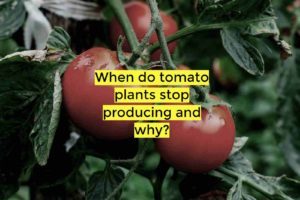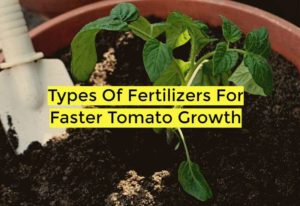Tomatoes are one of the most popular crops for backyard gardeners and commercial farmers alike. They are easy to grow, delicious, and versatile in the kitchen. However, growing tomatoes can be a challenging endeavor, especially when it comes to watering. One solution to this problem is to use a drip irrigation system specifically designed for tomatoes. In this article, we’ll explore the benefits of using a tomato drip irrigation system and provide tips on how to install and maintain one.
What is a Tomato Drip Irrigation System?
A tomato drip irrigation system is a specialized watering system that delivers water directly to the root zone of tomato plants. The system consists of a network of tubes, emitters, and valves that are connected to a water source.
Water is delivered through the emitters at a slow and steady rate, which helps to conserve water and prevent waterlogging of the soil.
Benefits of Using a Tomato Drip Irrigation System
Increased Yield: A tomato drip irrigation system ensures that plants receive a consistent and adequate supply of water. This can lead to increased yield and larger fruit size.
Water Conservation: Drip irrigation is a highly efficient method of watering plants. It reduces water loss due to evaporation and runoff, making it an eco-friendly option.
Reduced Risk of Disease: Overhead watering can increase the risk of foliar diseases, such as blight and powdery mildew. A drip irrigation system minimizes water contact with leaves and stems, reducing the risk of disease.
Reduced Labor: Once a tomato drip irrigation system is installed, it requires minimal maintenance. This frees up time for other gardening tasks and reduces the need for manual watering.
How to Install a Tomato Drip Irrigation System
Plan Your Layout: Determine the location of your water source, the number of tomato plants you have, and the distance between them. This will help you determine the amount and length of tubing, as well as the number of emitters and valves you’ll need.
Gather Materials: You’ll need tubing, emitters, valves, connectors, and a filter. Make sure to choose materials that are specifically designed for drip irrigation systems.
Install the Water Source: Connect the filter to the water source and install a pressure regulator to ensure that the water pressure is at the right level for your system. Then, connect the tubing to the water source and lay it out according to your layout plan.
Install Emitters and Valves: Place the emitters at the base of each tomato plant, ensuring that they are positioned close to the root zone. Connect the emitters to the tubing using connectors, and install valves to control water flow to each section of the system.
Test the System: Before turning on the water, check for leaks and make sure all components are properly connected. Then, turn on the water and check for proper water flow to each plant.
Maintaining a Tomato Drip Irrigation System
Regular Maintenance: Inspect your system regularly to check for leaks, clogs, and other issues. Make sure to clean the filter and emitters to prevent blockages.
Adjust Watering Schedule: Adjust the watering schedule according to weather conditions, plant growth, and fruit production. In hot, dry weather, you may need to water more frequently than in cooler, wet conditions.
Winterizing: If you live in a colder climate, make sure to winterize your system to prevent damage from freezing temperatures. This may involve draining the system and removing components for storage.
What is the spacing for tomatoes in drip irrigation?
Tomatoes are a popular crop for many gardeners and farmers due to their delicious taste and versatility in recipes.
However, growing healthy and productive tomato plants requires careful attention to irrigation.
One popular irrigation method is drip irrigation, which involves delivering water directly to the plant’s roots through a system of tubes and emitters. But what is the proper spacing for tomatoes in drip irrigation?
The ideal spacing for tomato plants in drip irrigation depends on a variety of factors, including the type of tomato, soil conditions, and the available water supply.
In general, most tomato plants should be spaced at a distance of 18 to 24 inches apart in rows that are spaced 4 to 5 feet apart.
This spacing allows for adequate air circulation and room for the plants to grow and develop properly.
However, if you are growing indeterminate tomatoes, which are vine-like and can grow quite tall, you may want to space them a bit further apart.
Indeterminate tomatoes should be spaced at a distance of 24 to 36 inches apart in rows that are spaced 6 feet apart.
This spacing allows for plenty of room for the plants to grow and climb, while also ensuring they receive adequate water from the drip irrigation system.
It’s also important to consider the soil conditions when determining the spacing for tomatoes in drip irrigation.
If your soil is particularly sandy or loamy, you may want to space your plants a bit closer together to ensure that they receive enough water.
On the other hand, if your soil is heavy and clay-like, you may want to space your plants a bit further apart to prevent overcrowding and promote good drainage.
How long should you run drip irrigation for tomatoes?
Drip irrigation is a popular method of watering tomatoes, as it provides an efficient and effective way of delivering water directly to the plants’ roots.
Unlike other irrigation methods, drip irrigation minimizes water loss through evaporation and runoff, resulting in water savings and increased plant growth.
However, determining how long to run your drip irrigation system can be challenging, as it depends on various factors such as weather conditions, soil type, and plant age.
In this article, we will discuss how long you should run drip irrigation for tomatoes to ensure optimal growth and yield.
Before we dive into the specifics of how long to run drip irrigation for tomatoes, it’s essential to understand the basics of drip irrigation.
Drip irrigation is more efficient than other irrigation methods, as it delivers water precisely where it’s needed, minimizing water loss and maximizing plant uptake.
When it comes to determining how long to run your drip irrigation system, there are a few key factors to consider.
key factors to consider
Weather Conditions
The first is the weather conditions in your area. If you live in a hot, dry climate, you may need to run your drip irrigation system for longer periods to ensure that the plants receive enough water.
Conversely, if you live in a cooler, wetter climate, you may need to run your system for shorter periods to avoid overwatering.
Soil Type
Another factor to consider is the soil type in your garden. If you have sandy soil, for example, water will drain more quickly through the soil, and you may need to run your system for shorter periods to ensure that the water reaches the plant roots.
On the other hand, if you have heavy clay soil, water will drain more slowly, and you may need to run your system for longer periods to ensure that the water reaches the plant roots.
age of your tomato plants
The age of your tomato plants is also a critical factor to consider. Young tomato plants have shallower root systems and may require shorter watering periods more frequently.
As the plants mature and develop deeper root systems, you can reduce the frequency of watering and increase the duration of each watering session.
Generally speaking, you should aim to run your drip irrigation system for about 30 minutes to an hour at a time, two to three times a week, depending on the factors mentioned above.
However, it’s crucial to monitor your plants’ soil moisture levels regularly to ensure that they’re getting enough water. You can do this by sticking your finger about an inch into the soil around the plants.
If the soil feels dry at this depth, it’s time to water again. With proper irrigation, your tomato plants will grow healthy and strong, resulting in a bountiful harvest.
Should I Run Drip Irrigation For Tomato Everyday?
While drip irrigation is an effective way of watering tomatoes, many gardeners wonder if they should water their plants every day. Let’s talk about tomato irrigation scheduling and whether or not you should run drip irrigation for tomatoes every day.
Tomato irrigation scheduling is the process of determining how often and for how long to water your tomato plants.
It’s important to note that tomatoes have different irrigation requirements depending on their growth stage.
For example, young tomato plants require more frequent watering than mature plants, as their root systems are not yet established.
In general, tomato plants require about 1-1.5 inches of water per week, depending on weather conditions and soil type.
However, it’s important to avoid overwatering, as this can lead to root rot and other issues. So, should you run drip irrigation for tomatoes every day? The answer is no.
Tomato irrigation scheduling
While it may seem like watering your tomato plants every day is the best way to keep them hydrated, it’s actually not necessary and can even be detrimental to their growth.
Watering your tomato plants every day can lead to overwatering, which can suffocate the roots and prevent them from absorbing nutrients properly.
Instead, it’s best to establish a consistent tomato irrigation schedule based on the plants’ needs and environmental conditions.
This means watering your plants deeply and less frequently, rather than watering them lightly every day.
In most cases, running drip irrigation for tomatoes two to three times a week is sufficient to meet their irrigation requirements.
To determine the best tomato irrigation schedule for your plants, it’s important to consider several factors, including weather conditions, soil type, and plant age.
As mentioned earlier, young tomato plants require more frequent watering, while mature plants can go longer between watering sessions.
While drip irrigation is an effective way of watering tomatoes, you should not run it every day.
Instead, establish a consistent tomato irrigation schedule based on the plants’ needs and environmental conditions.
Water your plants deeply and less frequently, and monitor the soil moisture levels regularly. By doing so, you’ll help ensure healthy, vigorous tomato plants and a bountiful harvest.
Summary
In conclusion, a tomato drip irrigation system is a great investment for any backyard gardener or commercial farmer who wants to maximize tomato yield while conserving water




